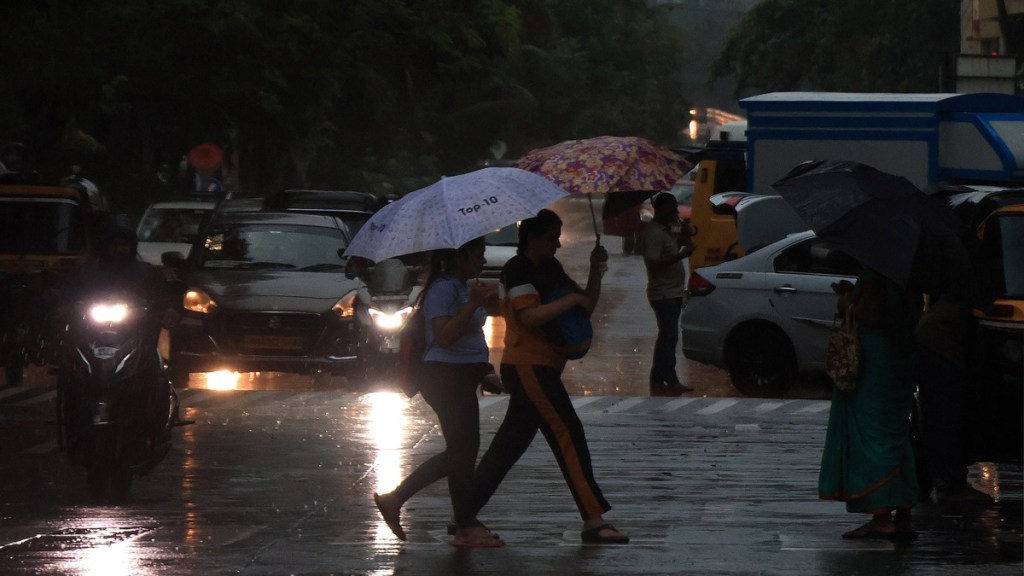By S Abhilash
The southwest monsoon arrived early over Kerala this year—the earliest in 16 years. While the timing of the onset does not consistently forecast the entire rainfall for the season, what matters is how evenly rain falls in different places and times, explains S Abhilash
l Why timing of the onset over Kerala is crucial?
INDIA’S CROP CALENDAR is very much reliant on the punctual onset of the monsoon with 80% of the annual rainfall attributed to it. In Kerala, the gateway to the monsoon, the arrival date varies from year to year, though the rain-bearing clouds consistently appear in the first week of June. The monsoon typically commences on June 1; however it has fluctuated between May 18 and June 19 during the past 50 years. The quantity of rainfall that is received during the season is subject to inter-annual variability. Though this variability is only 10% of the long-term mean, it has a big impact on the aggregate GDP and food production. There is also a significant degree of spatial variability in the quantity of rainfall that various regions receive.
The advent of the monsoon encompasses more than mere precipitation; it necessitates a transformation in wind patterns, including the establishment of robust westerlies that convey moisture-rich air over the Indian subcontinent. To avert confusion with pre-monsoon precipitation associated with low-pressure systems (often misidentified as the monsoon), the India Meteorological Department has established objective onset criteria based on both rainfall and wind patterns. The onset timing does not consistently forecast the entire rainfall for the season; however, its prompt arrival is crucial for the kharif crops in Karnataka and Maharashtra, where farmers utilise the Kerala onset as a reference for organising agricultural endeavours.
l Does this impact the rest of the rains?
STARTING EARLY DOESN’T mean the rain will be strong or spread out evenly. Some early-onset years ended with less rain than usual, while late-onset years finished with more rain than usual. Even when the rainy season is “average” across the country, some places can still get too much or too little rain. It’s not just when or how much it rains that counts, but also how evenly it falls in different places and times. For farmers and other related industries, steady rain at the right time is much more valuable than rain that comes early or in large amounts during the season.
l What caused the early onset?
THE MONSOON ARRIVED early over Kerala in 2025—the earliest in 16 years—thanks to a mix of good global and local weather. There were neutral stages of El Niño (when unusually warm surface water temperatures appear along the western coast of South America in the eastern Pacific Ocean) and the Indian Ocean Dipole (a situation characterised by fluctuations in sea surface temperatures and atmospheric conditions between the western and eastern Indian Ocean), strong showers before the monsoon, and a strong Mascarene High (a semi-permanent, subtropical high-pressure area in the Southern Indian Ocean which is a key factor impacting the monsoon) that had been going on for a while. Low-pressure areas and upper-air cyclonic circulations over the eastern Arabian Sea helped move the monsoon quickly up the west coast. Within a day, it reached Goa and Maharashtra. Subsequently, the formation of another low-pressure area over the Bay of Bengal played a pivotal role in sustaining extended active spells of the monsoon over the southern peninsular region this year.
l Shift in cloud characteristics
A RECENT WORK published in npj Climate and Atmospheric Science by Sreenath, etal, (2022), reported a shallow-to-deep transformation in the cloud depth over the west coast of India during the monsoon season in recent decades. These vertically growing clouds—such as cumulonimbus and other highly convective cloud types—have shown the most significant increase along the coastal regions adjoining Kerala. Earlier studies identified these cumulonimbus clouds and the subsequent local cloudbursts as major contributing factors to the floods and landslides in Kerala in 2019 and 2024. The shift in cloud characteristics towards more explosive structures is now being observed as an emerging pattern along the west coast. The increasing frequency of deep convective cloud formations has emerged as a key driver of the squally weather conditions accompanied by intense lightning activity observed in recent times. These systems pose multiple hazards, including episodes of heavy rainfall, and represent a growing concern for weather-related risk assessment and disaster preparedness.
l Changes in the pattern of the monsoon
IN RECENT TIMES, there have been changes in the overall pattern of the monsoon rains in terms of increasing frequency of extreme rainfall and extended dry spells in-between. In recent years, there has been an increase in the occurrence of low-pressure systems forming concurrently with the onset of the monsoon. While these systems often facilitate the rapid initial advancement of the monsoon along the west coast, these can also lead to the stalling of moisture transport inland. As a result, the further progression of the monsoon across the subcontinent may be temporarily halted.
The writer is the director of Advanced Centre for Atmospheric Radar Research, Kochi

